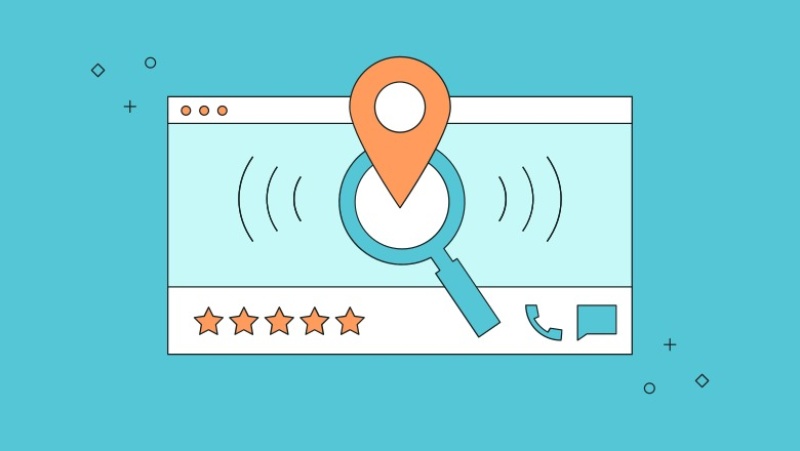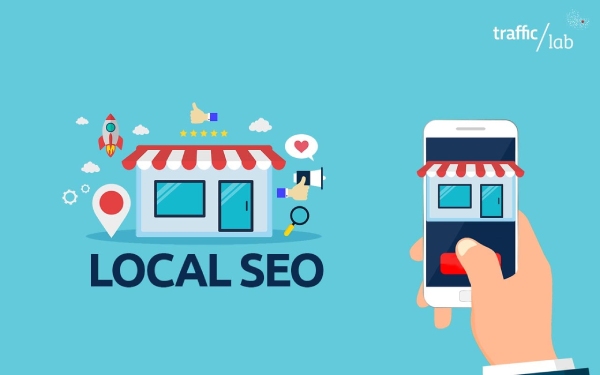News
10 Tips for Better Local SEO Rankings

A strong online presence is essential for companies looking to draw local clients in the modern digital era.
Recent data shows that 72% of customers who conduct local searches go to a store within five miles and that 46% of all Google searches are for local information.
Local SEO optimization is important for companies looking to increase foot traffic and sales.
Based on best practices and the most recent data-driven insights, here are the top 10 ways to boost your local SEO.
What is local SEO, and why is it important?
Local SEO (Search Engine Optimization) is adjusting a website and its online presence to improve its position in search engine results pages (SERPs) for queries based on a specific location.
It involves a mix of tactics, including building local backlinks, focusing on location-specific keywords, creating and optimizing Google My Business listings, and gathering local reviews.
Local SEO is essential for companies that operate in particular regions and rely on local clients. Businesses can increase their online visibility, draw in more local clients, and increase foot traffic and revenue to their physical stores by enhancing their local SEO.
You can Do it yourself, or you can also choose a company providing services for Local SEO.
If you want to do it yourself, here are the tips to improve your local SEO.
Ways to Improve Your Local SEO:
Verify and Update Your Google My Business Listing for Accuracy:
A free tool called Google My Business (GMB) lets you control your company’s online presence on Google’s search engine and maps.
Ensure the information on your GMB profile, including your company name, address, phone number, website URL, and business hours, is accurate, complete, and current.
Create location-based content and local keyword optimization for your website:
Use local keywords in your website’s content, page titles, meta descriptions, and URLs. Add geographically specific content, such as regional news, activities, and tales.
With Google’s Keyword Planner, you can filter keyword searches by location to determine the popular search terms in a particular region.
It allows you to develop a list of locally relevant keywords to target. Afterward, you should incorporate them into your website’s meta content, copy, and URLs.
Create reputable backlinks from high-quality sources.:
Obtaining high-quality backlinks from reliable websites aids in building the authority and credibility of your company.
You can gain backlinks by producing shareable content, posting as a guest on other websites, or contacting nearby companies for partnerships.

Embrace and reply to Online customer reviews:
In local SEO, customer reviews are extremely important. Not only does optimizing your Google My Business presence with positive reviews help your business, but it also increases the likelihood of attracting more local customers.
According to BrightLocal’s 2017 Local Consumer Review Survey, 85% of customers trust online reviews as much as personal recommendations.
Therefore, encouraging your customers to leave positive reviews can build trust and credibility for your business and potentially lead to more customers in your local area.
Implement schema markup:
Search engines can better understand the content on your website thanks to schema markup. Use schema markup to include extra details like the name, location, contact information, and hours of operation.
Make sure your site is quick and responsive to mobile devices:
A mobile-friendly website is essential because most users today access the internet through their mobile devices. To offer a better user experience, ensure your website is responsive and loads quickly.
Furthermore, having a website that is optimized for search engines is equally important for reaching a wider audience. Conducting an SEO audit can help identify areas of improvement on your website and provide recommendations for better search engine visibility.
In 2018, a Stone Temple study examined mobile vs. desktop trends in 2017 and discovered that the mobile shift was happening faster than anticipated.
The study found that mobile website visits increased from 57% in 2016 to 63% in 2017, while desktop visits decreased from 43% in 2016 to just 37% in 2017.
Additionally, a 2017 study from Acquisio found that traffic from local searches could be particularly profitable, with 75% of mobile searches that showed local intent leading to in-store and offline visits within 24 hours.
It emphasizes the importance of optimizing your mobile website to succeed in local SEO and good SEO in general.

Create content with a local focus, like blog posts or community news:
Creating content directly addressing local issues is key to capturing local customers’ attention.
It is possible to accomplish this by writing blog posts about local news stories, activities, or events, creating videos about local charities or causes your business supports, or creating high-quality local content on your website if you serve different parts of a region with local content.
By producing relevant and engaging content for your local audience, you can establish your business as an authority in the local community, increasing your visibility and credibility and ultimately driving more traffic and sales.
Use social media to interact with the neighborhood:
Connect with your neighborhood on social media sites like Twitter, Facebook, and Instagram. It promotes brand awareness, improves online presence, and establishes connections with potential clients.

Include relevant online directories for your business:
Your local SEO will benefit from having your business listed in relevant online directories like Yelp and the Yellow Pages.
Websites such as Yelp, Foursquare, MapQuest, and YellowPages are examples of online business directories.
Getting your business’s name, address, and phone number listed in these directories improves visibility and enhances your local SEO.
Track and analyze your local SEO performance:
To keep track of the effectiveness of your local SEO, use tools like Google Analytics and Google Search Console. Improve your regional SEO strategy by analyzing your traffic, rankings, and other metrics to find areas for improvement.

Conclusion:
In conclusion, businesses that want to draw clients from their neighborhoods must optimize their local SEO.
You can increase your online visibility and draw in more local clients by claiming your Google My Business listing, optimizing your website, creating backlinks, encouraging customer reviews, producing locally relevant content, using social media, adding your company to online directories, keeping an eye on your performance, and more.
To maintain and improve your local SEO ranking, evaluating your performance and regularly changing your strategy is important. Keep in mind that local SEO requires ongoing work and attention.
-

 Sports4 weeks ago
Sports4 weeks agoAl Ahly vs Inter Miami, 2025 FIFA Club World Cup – Preview, Prediction, Predicted Lineups and How to Watch
-
Health3 weeks ago
Back to Roots: Ayurveda Offers Natural Cure for Common Hair Woes
-

 Tech3 weeks ago
Tech3 weeks agoFrom Soil to Silicon: The Rise of Agriculture AI and Drone Innovations in 2025
-

 Startup4 weeks ago
Startup4 weeks agoHow Instagram Is Driving Global Social Media Marketing Trends
-

 Sports3 weeks ago
Sports3 weeks agoFIBA 3×3 World Cup 2025: Full Schedule, Preview, and How to Watch
-

 Science4 days ago
Science4 days agoJuly Full Moon 2025: Everything You Should Need to Know, When and Where to See Buck Moon
-

 Gadget3 weeks ago
Gadget3 weeks agoThings to Know about Samsung Galaxy S26: What’s New and What’s Next
-

 Sports4 weeks ago
Sports4 weeks agoWorld Judo Championships 2025: Full Schedule, Date, Time, Key Athletes and How to Watch

























